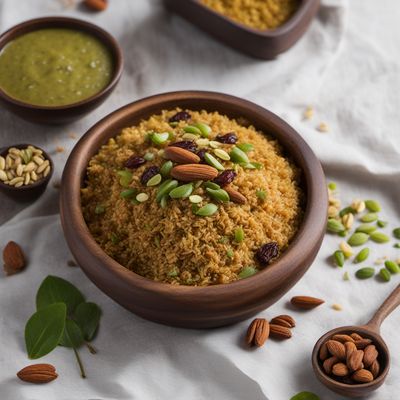
Ingredient
Almonds
The Versatile Almond
Almonds are the edible seeds of the Prunus dulcis tree and are characterized by their oval shape, brown skin, and creamy white interior. They have a delicate yet distinct nutty flavor and a crunchy texture that adds depth to both sweet and savory recipes.
Origins and history
Almonds have a rich history dating back thousands of years and are believed to have originated in the Mediterranean region. They were highly prized by ancient civilizations such as the Egyptians and Romans for their nutritional value and culinary versatility. Today, almonds are cultivated in various regions around the world, including California, Spain, and Australia.
Nutritional information
Almonds are a nutritional powerhouse, packed with healthy fats, protein, fiber, vitamin E, and minerals such as magnesium and calcium. They are also a good source of antioxidants and have been associated with numerous health benefits, including heart health and weight management.
Allergens
May cause allergic reactions in individuals with nut allergies.
How to select
When selecting almonds, look for ones that are plump, uniform in size, and free from cracks or blemishes. The skin should be intact and have a uniform brown color. Avoid almonds that have a rancid or bitter smell, as this indicates they may be spoiled.
Storage recommendations
To maintain the freshness of almonds, store them in an airtight container in a cool, dry place, away from sunlight and moisture. Alternatively, refrigerate or freeze them to extend their shelf life. Properly stored almonds can last for several months.
How to produce
Almond trees can be grown in regions with a Mediterranean climate, characterized by mild winters and hot, dry summers. They require well-drained soil and full sun exposure. While growing almond trees from seeds is possible, it is more common to propagate them from grafted saplings for better yield and disease resistance.
Preparation tips
Almonds can be enjoyed in various ways, such as raw, roasted, or as an ingredient in both sweet and savory dishes. They can be ground into flour, used as a topping for salads or desserts, or transformed into almond butter or milk. Roasting almonds enhances their flavor and can be done in the oven or on a stovetop.
Substitutions
Cashews, walnuts, or pistachios can be used as substitutes for almonds, although they have slightly different flavors and textures. Sunflower seeds or pumpkin seeds can also be used as alternatives for a nut-free option.
Culinary uses
Almonds are widely used in baking, confectionery, and desserts, such as almond cakes, cookies, and marzipan. They are also commonly used in savory dishes, such as salads, pilafs, and as a coating for meats or fish.
Availability
Commonly available in Mediterranean countries, the United States, Spain, and Australia.
More ingredients from this category
Recipes using Almonds » Browse all

Bengali-style Sękacz
Spiced Delight: Bengali-style Sękacz

Weesper Moppen - Dutch Almond Cookies
Deliciously Dutch: Weesper Moppen - Traditional Almond Cookies

Indo-style Florentines
Spiced Almond Florentines: A Fusion of Italian and Indo Flavors

Técula Mécula with a Twist: A Fusion of Spanish and Australian Chinese Flavors
Szechuan-inspired Técula Mécula: A Spicy Fusion Delight

Sachertorte
Chocolate Almond Cake with Apricot Glaze

Haute Cuisine Florentines
Elevated Florentines: A Haute Cuisine Delight

Eurasian Coconut Biscotti
Coconut Delight Biscotti: A Eurasian Twist on Italian Classic

Peruvian-Inspired Baklava
Andean Delight: Quinoa and Lucuma Baklava

Almond Gelato with a Twist
Creamy Delight: Almond Gelato with a Hint of Amaretto

Panjiri - A Nutritious Indian Sweet Delight
Heavenly Panjiri: A Wholesome Indian Sweet Bursting with Flavor

Homemade Almond Polvorón
Deliciously Nutty Almond Polvorón

Zimtsterne - German Cinnamon Stars
Heavenly Cinnamon Delights: German Zimtsterne Cookies

